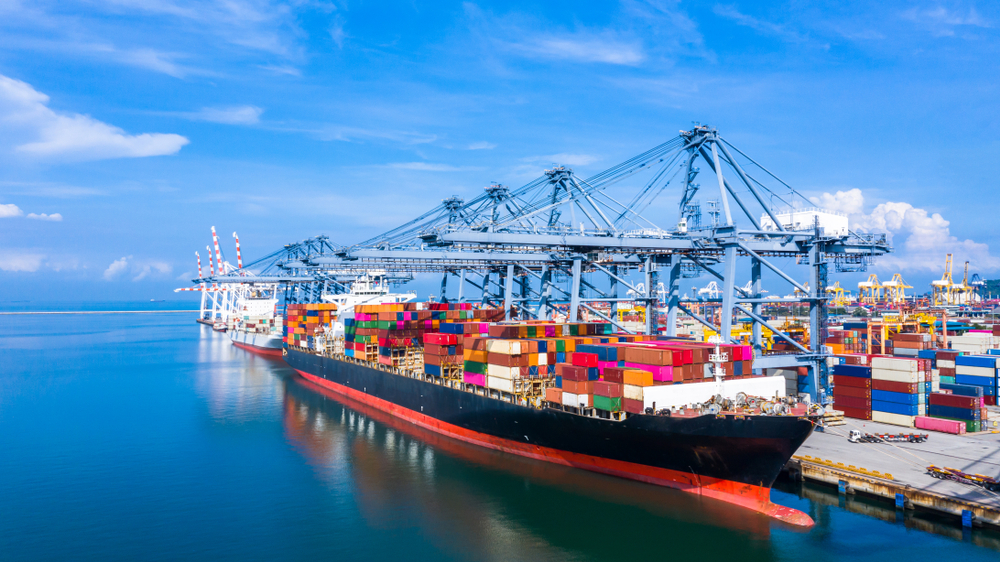
Several logistics managers have recently begun to speculate the changing status of the ocean freight rates. A shipping firm named HLS recently wrote to its clients about their projections of ocean freight rates. They stated that they expected freight rates to normalize later on in 2023. However, the adjustment appears to be coming in earlier.
As of November, Alan Baer, the CEO of OL USA, made his observations public. According to Baer, the peak in the market was the second quarter, and from that point, there was a steady decline. Alan also stated that it was too early to draw conclusions about it being a trend at the time.
Amidst the fall, The CEO of Sea Intelligence, Alan Murphy, said major shipping lines reported profits of nearly $122 Billion. The trade line showed an 11% drop in Asia’s year-over-year imports to the US in October. This was followed up by a decline in September. Based on this trend, HLS saw no need to be optimistic about a rise in November.
At the moment, the projections of logistic managers seem to be true. Within October and now, the rates have continued to drop rather than increase.
Table of Contents
ToggleOcean Freight Rates Decline Statistics
Xeneta’s global XSI detected a 5.7% drop in ocean freight rates in November. According to statistics, this was the largest month-over-month decline in freight rates since the introduction of PSI in 2019.
Amidst the decline, Peter Sand, the chief analyst at Xeneta, noted that it would have a negative effect on carriers. According to him, the decline in XSI will cause many carriers to witness a fall in their average rates. Consequently, this will bring an end to record-breaking quarters.
Causes Of The Drop In Ocean Freight Rates
The auto transport industry’s supply chain has undergone several changes between 2019 and the Post Covid-19 era. They have weathered storms bothering around truck driver shortages and semi-conductor chip shortages.
The recent supply chain alteration plays a crucial role in the fall of ocean freight rates in the west coast ports. Recently, the industry has been trying to keep up with the sudden change in demand characteristics. Unlike the unexpected surge in demand during the pandemic, the industry has had to grapple with a sudden demand decline.
Furthermore, the freight market is oversupplied with ships and containers. The cumulation of these factors has played a significant role in the ocean freight rates fall. In a bid to combat inflation, central banks across the world have begun to increase their interest rate.
These banks also aim to lower customer demand, and this affects supply chain prices. While the banks are focused on combating inflation, CEOs are concerned that a larger crisis might occur. On the part of the CEO, they feel the slowing sales might lead to the risk of inflation. Furthermore, they are concerned that the economy will be affected badly in a bid to lower inflation.
Effect Of The Decrease In Demand On Ocean Freight Prices
According to Xenata data, 85% of customers intend to decrease ocean freight spending in 2023. On the other hand, 42% state that their freight spending will follow the pattern they used in 2022. Despite these decisions, the freight rates have continued to drop although, the ocean freight prices keeps falling in the East Coast.
Christian Roeloffs of container exchange believes that the decline in prices will have a further effect on freight prices. In his words, “In 2023, there is a high possibility of an all-out price war,”
Going further, Roeloffs said, “It doesn’t seem that the capacity restrictions that we have seen in the past two years are due to return. So we’ll have ample capacity both on the vessel and on the container side.
Roeloff also said he does not expect the big players to back down. According to him, this is because of the competitive dynamics in the container shipping and liner industry. He concluded his remark by saying, “we do expect prices to come down to almost variable costs. We also foresee market consolidation.”
MI Car Shipping is Here to Help

MI Car Shipping remains undaunted in the face of the ocean freight rates change. Our customers are our priority, and we are focused on easing the shipping stress and hassles. Regardless of where you are located across the top 18 counties in the US, our car shipping services have got you covered. We help to ease the burden of relocation. MI Car Shipping is your reliable car shipping company with an A+ rating and excellent customer reviews.
We are a four-time finalist with the Better Business Bureau (BBB) and a licensed and bonded car shipping broker with the Federal Motor Carrier Safety Administration. We provide excellent and satisfactory vehicle transport services. At MI Car Shipping, we only work with carriers with a service rating of at least 95% for our customers. Hence, you would get your car promptly and in good condition.
Call MI Car Shipping at 866-620-1776 today to schedule your auto transport, or request car shipping quotes online. We look forward to helping you with your upcoming car shipping needs. For more information, visit our website at www.mettiintl.com/

















